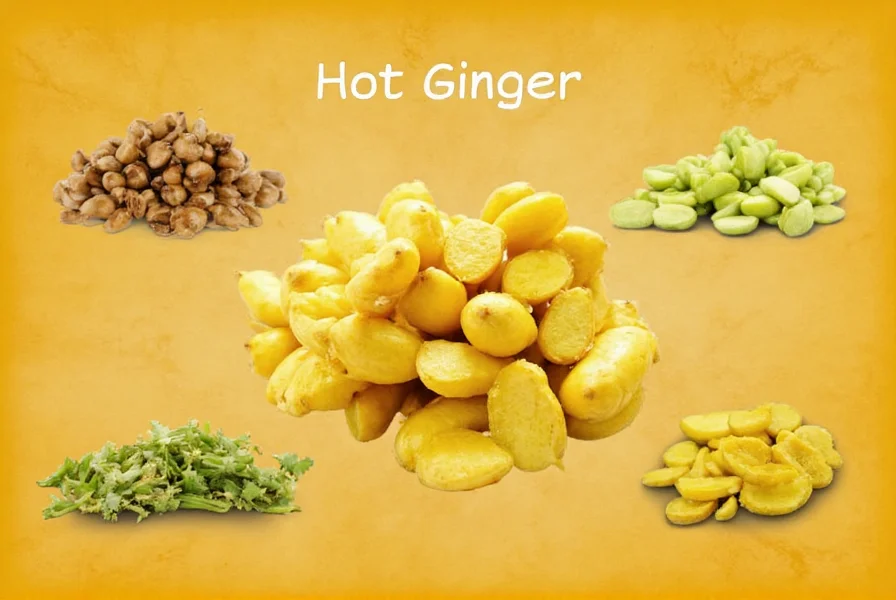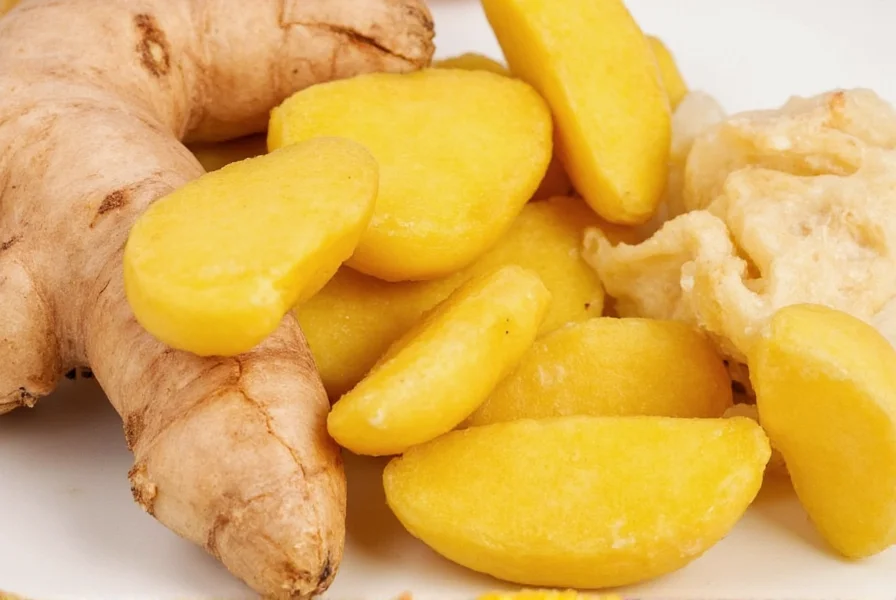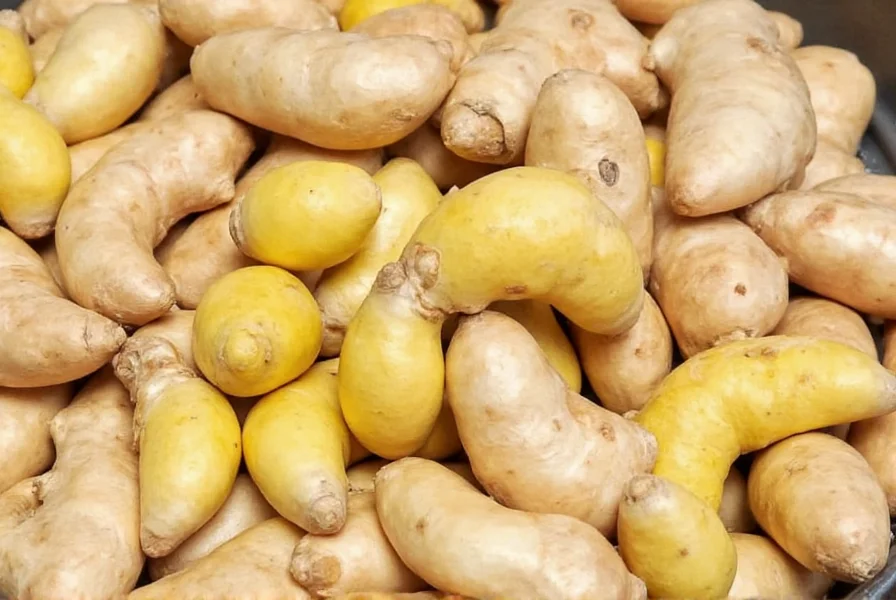Understanding hot ginger begins with recognizing its botanical nature. Ginger (Zingiber officinale) produces rhizomes containing gingerols—the compounds responsible for its characteristic heat. The spiciness intensifies as ginger matures, with older roots developing higher concentrations of these bioactive compounds. This natural variation explains why some ginger specimens deliver noticeably more pungency than others.
Ginger Varieties and Heat Profiles
Ginger isn't a one-size-fits-all ingredient. Different cultivars exhibit distinct heat levels:
| Ginger Type | Heat Level | Best Uses |
|---|---|---|
| Young ginger (spring ginger) | Mild (2-3 on heat scale) | Salads, pickling, delicate sauces |
| Mature ginger (common grocery store) | Moderate (4-6 on heat scale) | Cooking, baking, tea preparation |
| African ginger | High (7-8 on heat scale) | Spicy curries, medicinal preparations |
| Indian ginger | Very high (8-9 on heat scale) | Strong-flavored dishes, traditional remedies |
The heat measurement scale above reflects subjective pungency ratings based on culinary testing. Factors like growing conditions and storage duration significantly impact actual spiciness. For those seeking how to make hot ginger tea with maximum potency, selecting mature ginger with tight skin and minimal wrinkles typically yields the most robust flavor.
Optimal Preparation Techniques
Proper handling preserves ginger's volatile compounds. When preparing fresh ginger for cooking or tea, follow these evidence-based methods:
- Peeling: Use the edge of a spoon rather than a knife to remove skin, minimizing flesh loss
- Grating: Microplane graters release more gingerols than chopping
- Steeping: For tea, simmer grated ginger 10-15 minutes (not boiling) to preserve compounds
- Combining: Pair with citrus or honey to balance intense heat while maintaining benefits

Culinary Applications of Potent Ginger
Chefs leverage hot ginger's intensity in specific applications where milder varieties would disappear. In Southeast Asian cuisine, mature ginger forms the flavor foundation for many curry pastes and broths. The compound 6-gingerol provides both heat and distinctive aroma that withstands prolonged cooking.
For home cooks exploring ginger tea for cold relief preparations, a simple effective method involves:
- Peel and thinly slice 1-2 inches of mature ginger
- Add to 2 cups of water and bring to simmer (not boil)
- Cover and steep 10-15 minutes
- Strain and add lemon or honey to taste
This preparation maximizes extraction of beneficial compounds while maintaining drinkability. The resulting beverage offers warming properties without excessive heat.
Understanding Ginger's Bioactive Properties
Scientific research indicates ginger contains over 100 bioactive compounds, with gingerols and shogaols being primary contributors to its sensory properties. These compounds demonstrate stability in heated preparations, explaining why hot ginger tea maintains potency through preparation. The conversion of gingerols to shogaols during heating actually increases certain bioactive properties.
When evaluating fresh ginger vs dried ginger for heat intensity, note that drying concentrates certain compounds while diminishing others. Fresh ginger provides more volatile aromatic compounds, while dried ginger offers more concentrated pungency. For most culinary applications requiring pronounced heat, fresh mature ginger delivers superior flavor complexity.

Storage and Selection Guidelines
Maximizing ginger's heat potential requires proper selection and storage. Choose firm rhizomes with smooth skin and minimal wrinkles. Store unpeeled ginger in the refrigerator's crisper drawer for up to three weeks, or freeze for extended preservation. Freezing actually makes grating easier while preserving bioactive compounds.
For those exploring spicy ginger varieties for cooking, consider these selection tips:
- Heavier specimens indicate higher moisture content and freshness
- Look for tight skin without soft spots or mold
- Smell the cut end—fresh ginger has bright, citrusy aroma
- Avoid roots with visible sprouting (indicates age)
Safety and Consumption Considerations
While generally recognized as safe, ginger consumption warrants attention to quantity. Most studies suggest 1-3 grams of fresh ginger daily as reasonable for culinary use. Those with gallstone conditions or taking blood-thinning medications should consult healthcare providers before regular consumption. The proper ginger tea preparation method involves moderation—typically 1-2 inches of ginger per serving—to avoid potential digestive discomfort.
Practical Applications Across Cuisines
Hot ginger features prominently in global culinary traditions. In Japanese cuisine, grated ginger accompanies rich fish dishes to cut through fattiness. Korean kimchi often includes ginger for both flavor and preservation properties. Caribbean jerk seasonings rely on ginger's heat to complement scotch bonnet peppers. Understanding these applications helps home cooks replicate authentic flavors when experimenting with ginger root preparation methods.
Frequently Asked Questions
What makes ginger hot or spicy?
Ginger's heat comes primarily from gingerols, bioactive compounds concentrated in the rhizome. Mature ginger contains higher concentrations, with 6-gingerol being the most prevalent compound responsible for the characteristic pungency. The heat level increases as ginger ages and develops more fibrous texture.
How can I reduce ginger's heat in recipes?
To moderate ginger's intensity, peel thoroughly (heat concentrates near the skin), use younger 'spring ginger' varieties, or cook ginger longer to break down gingerols. Adding acidic components like lemon juice can also balance perceived heat. For tea preparations, strain after 5-7 minutes instead of the full 15 minutes to reduce potency.
Does cooking affect ginger's beneficial properties?
Simmering ginger (not boiling) for 10-15 minutes preserves most beneficial compounds while converting some gingerols to shogaols, which have different bioactive properties. Excessive boiling degrades volatile compounds, while gentle heating actually enhances certain properties. The optimal preparation maintains temperatures below 100°C (212°F).
How should I store ginger to maintain its heat?
Store unpeeled ginger in the refrigerator's crisper drawer in a paper bag or wrapped in paper towel. This maintains moisture balance while preventing mold. For longer storage, freeze whole ginger—frozen ginger actually grates more easily while preserving heat compounds. Avoid airtight containers which promote moisture buildup and spoilage.











 浙公网安备
33010002000092号
浙公网安备
33010002000092号 浙B2-20120091-4
浙B2-20120091-4